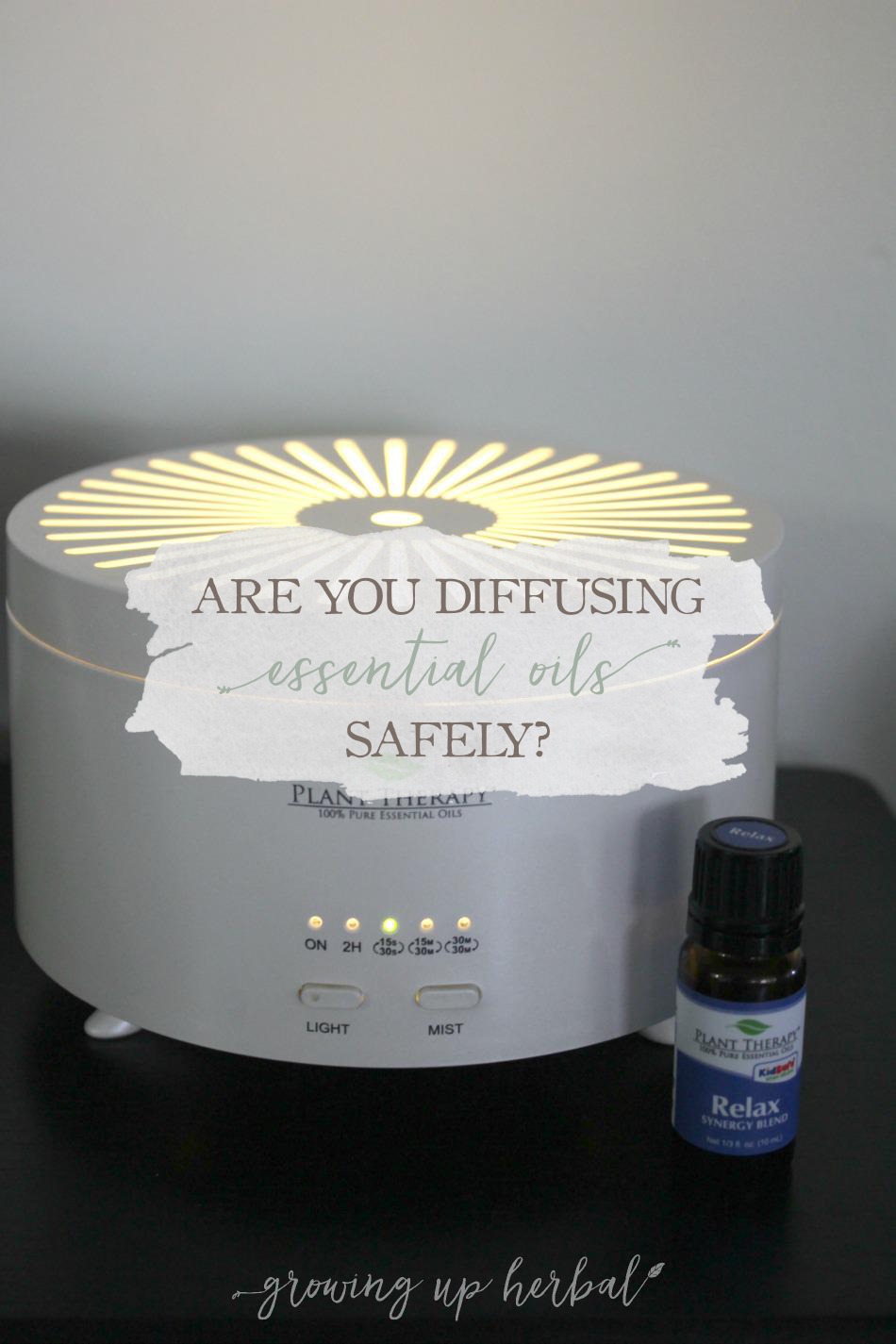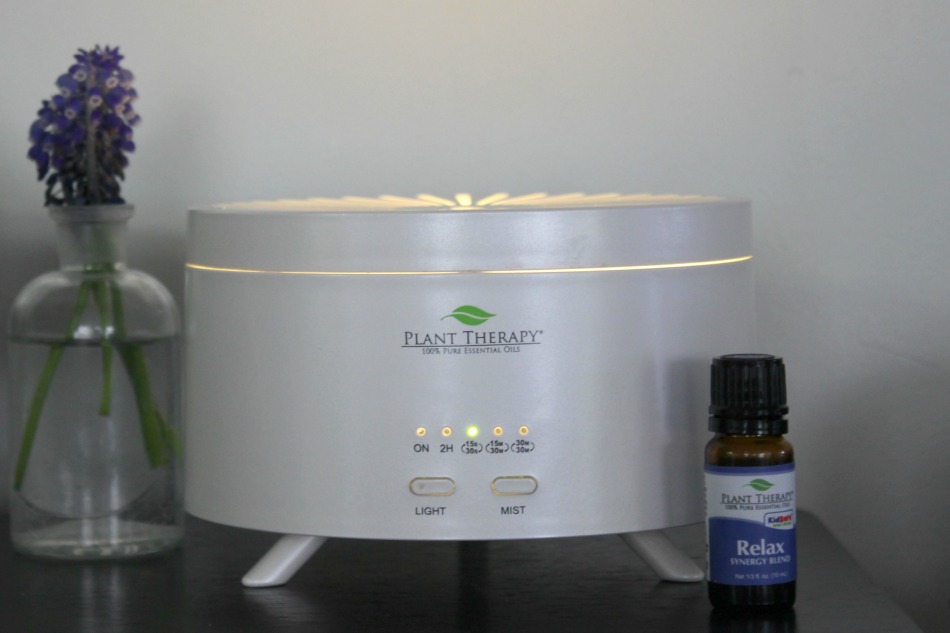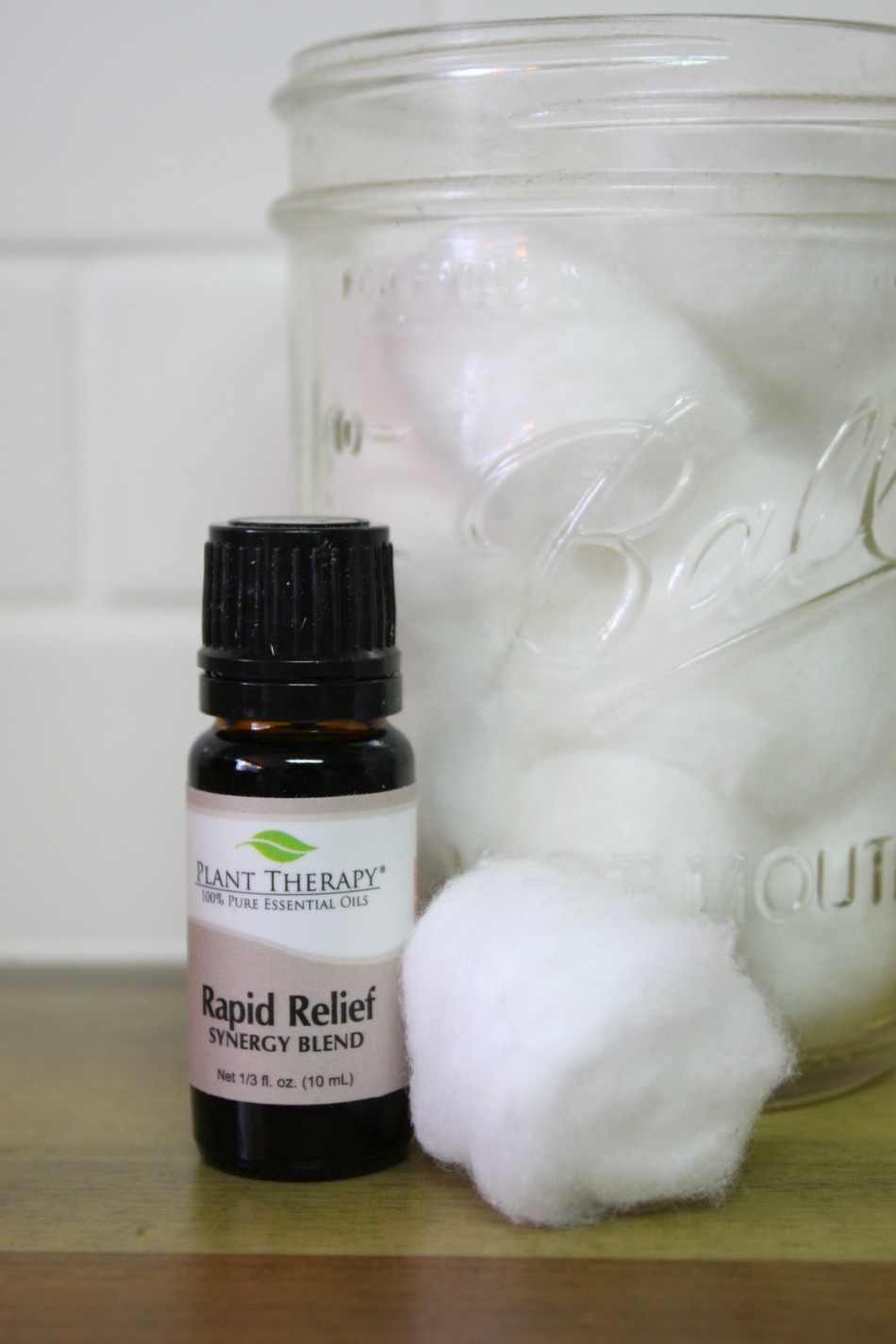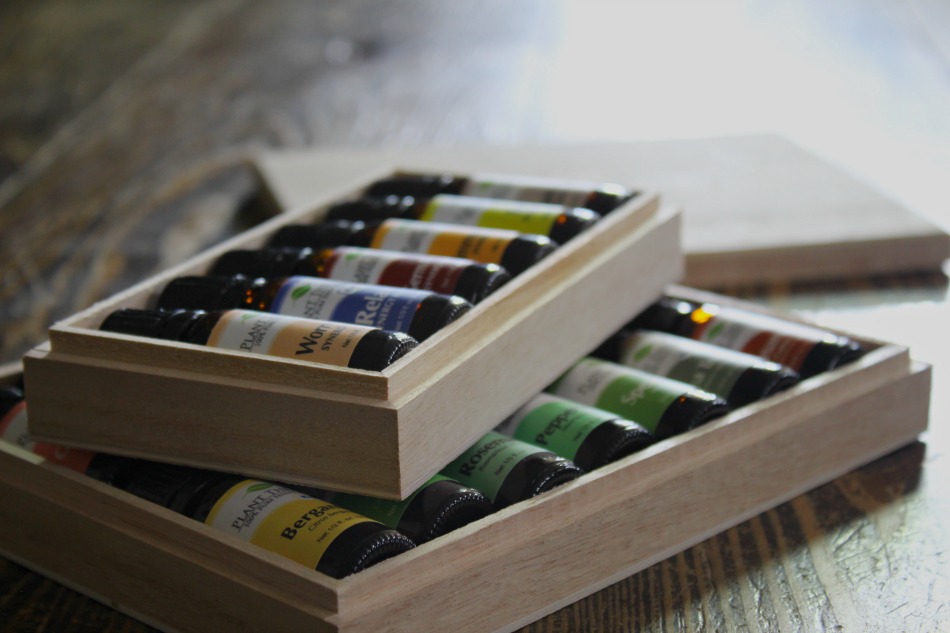Have you ever… left your essential oil diffuser running all night long in the same room where your sick child slept? I have.
Have you ever… diffused essential oils around pets without first checking to see if it was safe for them? I have.
Have you ever… diffused essential oils in your home all day to make it smell good without considering if this constant flow of essential oils was safe? I have.
If you’ve ever wondered whether or not you’re diffusing essential oils safely in your home, you’re not alone. Seeing how I’ve wondered this myself, I decided to do some digging. First, I wanted to know how essential oils work in the body once you breathe them in. Next, I wanted to know some various ways to diffuse these oils. And finally, I wanted to know how to go about diffusing essential oils safely in my home.
Today, I’m here to share what I’ve found with you.
How Diffusing Essential Oils Works In The Body
Diffusion is a form of inhalation. When you diffuse an essential oil, it’s estimated that only 50% of the oil molecules you’re diffusing actually make it into the body to be used in the following two ways.
- First, around 95% of essential oil molecules you breathe in are passed into the lungs where they cross over into the circulatory system and are metabolized into molecules the body can use via the liver. This entire process is responsible for the various physical effects essential oils trigger in the body.
- Secondly, the remaining 5% of essential oil molecules go to the brain where first, the scent is recognized and emotion and memory centers are signaled, and next, the molecules are absorbed into the brain where neurochemicals are triggered. This process is responsible for the psychological effects essential oils produce in the body (Tisserand, n.d.).
Let’s look at an example. (The essential oil drops in this example are only used to make this concept easier to grasp. You wouldn’t actually use this many drops.)
Let’s say you diffuse 200 drops of an essential oil in your home over the course of an hour. It’s estimated that you will breathe in the molecules from 100 of those drops. From those 100 drops, 95% will pass into your lungs and 5% will pass into your brain.
Again, diffusing 200 drops of essential oil is a bit overkill, but I wanted to use large numbers to make my point. Inhaling essential oils is a very effective and easy way to benefit from these products.
Again, keep in mind that these amounts are estimates, and absorption rates will vary from person to person and situation to situation. Some things that can affect absorption rates are the health of the individual, the freshness of the essential oil used, the size of the room the person is in, and more.
Popular Ways of Diffusing Essential Oils
When it comes to diffusing essential oils, there are several different ways to go about it.
Direct Inhalation
The simplest way to diffuse essential oils is to open your bottle and smell the oils. The upside to this method is that it’s quick and easy. The downside is that it exposes your oils to oxygen which can lead to oxidization and eventually cause your oils to go rancid.
Personal inhalers can remedy this situation, and they are another great way to use direct inhalation. With personal inhalers, you put a small amount of essential oil on the inhaler pad and then directly inhale it from there. This keeps your essential oil bottles closed more, therefore, reducing the chance of oxidization.
Simple Diffusion
Another way to diffuse essential oils is to use some simple diffusion techniques. One way to do this is to place essential oil drops on a cotton ball, tissue paper, or a clay/stone surface (like a diffuser pendant) and let it sit out in the room. The oils will evaporate into the air where they can be inhaled. You can also make a room spray to spritz in your personal space as well.
These methods are easy to do, but the diffusion is limited to a small area and a short amount of time. This means that in order to inhale the majority of the essential oil, the diffuser needs to be close to you, and if you want this diffusion to last, you’ll need to add additional essential oils hourly.
Heat Diffusion Methods
There are several heat methods that can be used to diffuse essential oils. For starters, essential oil burners such as tea light diffusers and lamp rings are two easy-to-use, inexpensive options. Essential oils are placed on a ceramic or stone surface and heat is applied underneath, usually from a tea light or a lamp light. This too is easy to do, but it’s debatable as to whether or not the heat negatively affects the essential oils. Depending on the diffuser, water can be added and the essential oils can be placed in the water. This allows the heat to slowly warm the water so the essential oils can evaporate without overheating the oils.
Another popular heat diffuser method is the use of a USB diffuser that you can use in your car or take with you wherever you go. These diffusers are easy-to-use and inexpensive. They also use a low amount of heat so the essential oil properties are not damaged. The downside to these diffusers is that you need to frequently add additional essential oil to keep the smell going.
Electronic Diffusion Methods
When it comes to electronic diffusers such as fan diffusers, ultrasonic mist diffusers, and atomizing diffusers (aka… nebulizers), everyone will have their preferences.
Fan diffusers are similar to plugins except they don’t use heat. Instead, a fan pushes cool air over a pad that contains drops of essential oils allowing them to evaporate into the air. These diffusers are inexpensive and can scent larger spaces, but like many of the diffusers I mentioned above, the oils evaporate quickly and need to be replaced often. I’ve never personally used a fan diffuser, but I’ve heard people comment on how they work well with thin oils but not thick ones.
Ultrasonic mist diffusers use ultrasonic waves to break up the essential oils and pass them into the air in a cool water mist. Most of these diffusers vary in price, style, and available settings. They seem to be the most popular way to diffuse essential oils as they only require small amounts of essential oil, work well for thick and thin oils, and disperse oils steadily over an extended amount of time. However, the downsides would be their cost and the fact that they’re electronic and will eventually need to be replaced.
Atomizing diffusers (or nebulizers) don’t require water or heat. They work by breaking apart the essential oils and dispersing the molecules into the air, making them more bioavailable to the body. The advantages of using atomizing diffusers are that the properties of the essential oils aren’t damaged, they diffuse well in large spaces, and they’re quite, but the downsides are the price and the fact that it’s easy to go through larger amounts of essential oil with them.
Some Precautions To Take When Diffusing Essential Oils
Now that you know how diffusion works in the body as well as some various ways to diffuse essential oils, I’m assuming that you can see how easy it is to absorb essential oils into the body simply by breathing. This is great, but it can also allow a person to be exposed to too many essential oil molecules in a short amount of time so let’s talk about some precautions to take when diffusing.
Like most things in life, moderation is key as well as a little bit of know how. Recently, an aromatherapist friend, Sheri Roach, listed out 5 tips for diffusing essential oils safely in the home, and I wanted to share them with you here.
- Some essential oils (particularly those containing aldehydes and phenols) can irritate the mucous membranes, therefore, they should be used in low amounts or not at all.
- Diffusers should run between 5-30 minutes, not constantly.
- When diffusing strong antimicrobial essential oils that are potentially irritating, diffuse in a closed room for one hour and air the room out before going in.
- Use caution when diffusing essential oils around pets. Mammalian pets should be able to leave the room if the scent becomes too much for them, and oils should not be diffused at all around fish, reptiles, or birds.
- Use caution, being careful to choose safe oils and diffuse at appropriate strength and length of time, when diffusing around children, the elderly, or those with respiratory troubles.
(Roach, 2016)
So, Have You Been Diffusing Essential Oils Safely
I’m not new to using essential oils by any means, but diffusing essential oils is the newest way I’ve used them. And, like most things that are new to us, we don’t always understand all the dos and don’ts before we begin. I’m guilty of this as I’m sure you are too, but that’s why it’s important to never stop learning and seeking good information from experts in different fields.
I don’t know about you, but I want to continue using essential oils for psychological and physical needs in my home because I’ve seen what great allies they can be. However, I respect these natural remedies, and I recognize that as much as they can be helpful, they can be harmful if used in the wrong way.
I hope you’ve learned a lot from this post, as I have, and that it helps bring you one step closer to using essential oils safely… especially diffusing essential oils safely, in your home.
Be sure to share this post on Facebook and pin it on Pinterest!
REFERENCES:
- Roach, S. (2016, December 27). How To Make Your Home Smell Good With Essential Oil Diffuser Blends. Retrieved February 12, 2017, from https://theherbalacademy.com/essential-oil-diffuser-blends/
- Tisserand, R. (n.d.). How Essential Oils Work in the Body. Retrieved February 12, 2017, from http://tisserandinstitute.org/how-essential-oils-work-in-the-body/





2.5
5
hi, well I am a bit disappointed after reading this. I just like to use EO in my diffuser for the scent, no so called medical benefits or to treat any conditions etc.
if I do not run it all the time, (i use my 30 seconds on, 30 seconds off feature) i do not get the full benefit of constantly smelling the nice aromas.
after reading this article sounds like I am over doing it.
I hear you. Keep in mind though, that the area of the room you’re diffusing in will make a difference. If you’re diffusing continuously in a large room with good airflow, there’s less of a chance that you’re inhaling too much of the essential oils.
Thank you for this article. Like the first comment, I LOVE the constant nice smelling oils of my ultrasonic diffuser on morning and night (using two different oils). I run it 8 hours straight then done in the morning then run the same whole set in the evening. I was worried that I was overdoing it – good thing I saw your post. Our home is very open. lotsa windows and sliding doors (I live in the Philippines) and I don’t feel bad now after reading this.
Glad you found this helpful, Naya!
I was not educated enough with hypes before receiving adverse reactions from using it too much. Truth hurts and am slowly recovering and loving the smell when i open the window with nature. If I am in a polluted area is a different story.
3.5
Thanks for this useful info. I’ve been using 100% essential oils for my electric diffuser. Recently someone bought us some M&S Burner/Refresher oils. I’m not sure if this is safe to use the same way and also if it won’t cause damage to an electronic diffuser as the intended use seems to be for other types of diffusion.
I’m not familiar with those types of oils, but if they are diluted with a carrier oil (fractionated coconut, olive, almond oil, etc.) or contain any sort of wax, they aren’t supposed to be used with most electric diffusers. All diffusers are different so it would be best for you to refer to your diffusers user manual, just to be sure. Hope that helps!
Thank you for a great article. I am new to diffusing essential oils and this information has helped me a lot. At this time I am most interested in using a diffuser at night in my bedroom, I have a hard time sleeping. I have a diffuser that has three settings, 1, 3 & 6 hour’s. I have only used the Lavender oil, and see from your article I am running it to long, on the 6 hour mode. Where do you suggest placing the diffuser in the room, and would you run a small fan to circulate the aroma at all. Being new to this, I am also concerned about the negative health affects to my lungs, if any? Thank you again and I look forward to reading more from you. And lastly; thank you for taking a stand for God and Family.
First, let me start off by saying I’m not an aromatherapist so you should definitely ask someone with more education and experience with essential oils if you’re interested in using them for chronic issues. With that said, I’d think if you were using lavender essential oil to help you relax and fall asleep, you’d only need to run it on the 1-hour setting, next to your bed, as you go to sleep. If you find yourself constantly waking at night and not being able to fall back asleep, you may want to look into other therapies that can help you deal with stress or hormones or other things that can cause issues with sleep. As far as using essential oils for this throughout the night, you may want to invest in a diffuser that has a start-stop setting so it kicks off and on repeatedly throughout the night. This is the one I have, and it works great. I hope this helps some, and best of luck!
I am very confused. Most of the oils I’v read about stated that they should be diffused 30 min to one hour, three times a day. Sherri Roach stated, “Diffusers should run between 5-30 minutes, not constantly.” None of the diffusers I’ve seen even have that option.
I think it really comes down to what you’re using the oils for. If you’re sick and you need more exposure to it, perhaps longer is okay, but I think Sherri is taking the safe route here, especially with beginners in mind. My diffuser (the one pictured in this post) has an option to diffuse for 15 seconds, 15 minutes, and 30 minutes as well as 2 hours, but it doesn’t go beyond that.
If I am just putting a few drops on a cotton pad at my desk, is it safe to use in the same room as a fish tank, or is it still too risky? When you walk in the room, you can definitely smell the oils.
I’m not sure about the safety of EOs in regards to fish. I would think it would be okay as long as the cotton pad isn’t sitting next to the fish tank, but you’d probably get a better answer Googling it or asking an aromatherapist.
3
Thank you for the post! I began to wake up with headaches and very congested. I was running it all night in my bedroom and I think i have developed allergies from it. Luckily i only used it for a week or so then decided something was off. Needless to say i got rid of it. Still recovering.
Yeah, some essential oils can be irritating to the mucosal lining of the nose if used too much, and you can definitely develop reactions and side effects from them. Hopefully, it cleared up for you after you stopped using it so much. You could try it again, only this time, set your diffuser’s timer (if it has one) so it doesn’t run constantly.
There is perception that adding more oils will make them smell stronger and they will work better. The opposite is true. Even if you can’t smell it, using a few drops will have an impact on your mind and mindset. Make sure you are familiar with the properties and limitations of the essential oils you have chosen before start diffusing. Another great article regarding this topic that I’ve read on the VINEVIDA website. The following link will take you to the article:
https://www.vinevida.com/blogs/adhoc-aromatics/how-to-use-essential-oils-in-a-diffuser
Interesting! Thanks for sharing!
Very interesting read. I have seen a lot of people create blends with carrier oils instead of directly adding the essential oils to the diffuser. This is usually done to give a consistent aroma and to save the cost also. I have noticed that diffusing blended oils has helped me with skin concerns because my skin showed sensitivity to some oils.
Yes, reed diffusers are a great way to incorporate essential oils into the air in your home. I’ve not had much luck diluting my EOs with a carrier oil first. I’ve tried it, but it seems to dilute the scent too much. I generally put the oil directly in the glass container with the reeds and that works well.